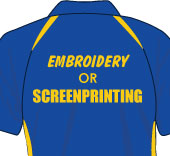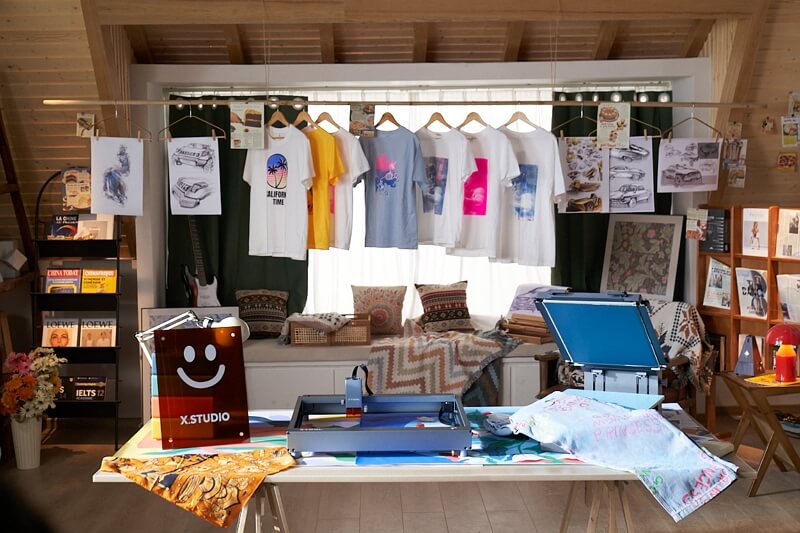The 8-Minute Rule for Tx Tees
The 8-Minute Rule for Tx Tees
Blog Article
Get This Report about Tx Tees
Table of ContentsTx Tees Can Be Fun For AnyoneWhat Does Tx Tees Mean?Not known Details About Tx Tees Not known Details About Tx Tees Rumored Buzz on Tx TeesThe Single Strategy To Use For Tx TeesTx Tees Can Be Fun For Everyone
Include up various other prices, like the number of energies it takes to run the store and the expense of ink and solution per layout. Take the print below.The solution needs to just be a couple of cents given that you 'd only require to coat one display for this task. Generally, printers attempt to make up to 45% revenue on a print task.

With DTF, you can publish a handful of t shirts, or simply one. Use the very same calculator as the section over to calculate exactly how much revenue you would certainly use DTF transfers. Compare the prices and earnings to whichever method talks finest to your setup and process. Both display printing and DTF have their specific niches in the globe.
The Single Strategy To Use For Tx Tees
The most effective method to understand? Ask around and see what printing shop like yours are doing. screen printer. Attempt both out and see which you like much better
When you're selecting what type of printing technique to utilize for printing your art work layouts on your garments, it is essential that you know the distinctions between these two techniques so you can maximize outcomes while decreasing costs. Display printing is one of the most typically used technique for printing styles on textiles.
DTG printing is also referred to as area or direct to garment printing due to the fact that it prints only what is required rather of making a screen as display printers do. https://tx-tees-45701767.hubspotpagebuilder.com/blog/txtees02. Display printing works by display filler squeegee display printing ink display mesh screen, after that transferring the picture to garment utilizing warm and/or pressure
The DTG printer uses unique dye-sublimation inks that are applied into a pre-designed image by an electronic printing system. The inks come to be part of the fabric, enabling dynamic shades and exceptional information. It's also understood as spot or direct to garment printing because it prints only what is required rather than making a display as display printers do.
The Facts About Tx Tees Revealed
Initially, it's much quicker - you can publish a fullcolor picture in mins, rather than hours for display printing. Second, there's no established time or prices included - you can print any layout you like, without having to produce a display initially. Third, there's no waste - due to the fact that display printers display print one layout at once, they need to evaluate each shade independently.
The paper is very costly and can just be used once. Once it's printed on, it needs to be disposed of. - The preliminary acquisition price is lower than the ahead of time investment of DTG printers- You can print multi-color designs one display at a time as opposed to having to print each shade separately like DTG printing.

Tx Tees Things To Know Before You Get This
Instead of utilizing screen mesh as screen printers do, dye sublimation printers use laser modern technology to transfer your images onto garments or paper. A warm process moves the dye from its solid-state straight right into the gas stage which consequently integrates it onto fabric substratums when they are swiftly heated up to heats under high pressure.
Sublimation printing is eco-friendly. It makes use of much less water than screenprinting, and due to the fact that it doesn't include making use of harmful solvents, it's secure for all sorts of garments. The dye sublimation inks are also odorless when healed, unlike screen printers that make use of harmful chemicals throughout the display printing procedure that leave an undesirable smell.
They additionally save money on costly devices like direct exposure units given that color sublimation printers don't require a UV direct exposure unit or a flash cure stove that is usually utilized in display printing (t-shirt printing). What is direct to garment printing (DTG Printing)? DTG printing is a digital screenprinting procedure that prints straight onto textile making use of specialized inkjet printers
Not known Details About Tx Tees
DTG printing provides lots of benefits over conventional screenprinting, including the capability to print photographic top quality photos, higher color vibrancy, and the ability to print styles on darker textiles. DTG printers function by heating the fabric ink till it develops into a gas. The gas after that penetrates the material, bonding with the fibers to produce a long-term print.

Display printers merely prepare their screen then start publishing up until they lack product or ink.- There is a variety of experienced screen printers all over the globe, which can be valuable for newbies. - It's a slower procedure - display printers commonly need to wait for the ink to dry prior to they can publish the following shade- Screen printers require hands-on labor, so there's a higher understanding curve and it takes longer to create a top notch layout- Display printing isn't as accurate as DTG printing, so you might obtain some "blood loss" of colors from one part of the picture onto an additional otherwise done effectively.
How Tx Tees can Save You Time, Stress, and Money.
Rather of making use of display mesh as screen printers do, dye great post to read sublimation printers make use of laser technology to transfer your pictures onto garments or paper. A heat procedure transfers the color from its solid-state directly right into the gas phase which consequently fuses it onto material substratums when they are quickly heated to high temperatures under high pressure.
Sublimation printing is environmentally friendly. It utilizes less water than screenprinting, and because it doesn't include making use of dangerous solvents, it's risk-free for all kinds of clothing. The dye sublimation inks are likewise odorless when treated, unlike screen printers that utilize harmful chemicals during the screen printing process that leave behind an undesirable odor.
They additionally conserve money on costly equipment like direct exposure systems considering that dye sublimation printers don't require a UV direct exposure system or a flash treatment stove that is typically made use of in screen printing. What is direct to garment printing (DTG Printing)? DTG printing is an electronic screenprinting procedure that publishes straight onto material making use of specialized inkjet printers.
All about Tx Tees
DTG printing offers lots of benefits over traditional screenprinting, consisting of the capability to print photo high quality photos, higher shade vibrancy, and the capability to print styles on darker fabrics. DTG printers function by heating the textile ink until it becomes a gas. The gas then permeates the material, bonding with the fibers to develop an irreversible print.
Report this page